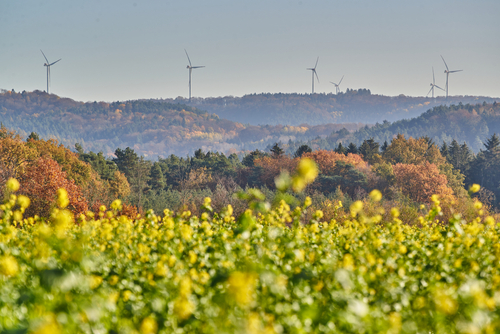On his first day in office, President Biden wasted no time and started unravelling Trump’s executive-order-driven war against the environment. The suspension of an earlier flat ban on import and installation of bulk-power system electric equipment supplied by foreign adversaries, primarily Chinese, may have passed almost unnoticed. But it carries great weight.
With that decision Biden signals that the administration could open doors to cooperation even with China, wherever necessary to fight climate change.
Hamburg (Brussels Morning) To discuss this issue, Brussels Morning speaks to Tom Stefanick, a security and intelligence expert at Brookings Institution and Corrado Clini, a former Minister for Environment of Italy, and Advisor to the Global Energy Interconnection Development and Cooperation Organization (GEIDCO).
Biden opens the door to Chinese technology
On January 20, President Biden ordered a 90-day suspension of a Trump executive order that prevented foreign companies from accessing and investing in strategic infrastructure such as the electric grid. The Secretary of Energy and Director of the Office of Management of Budget (OMB) will jointly assess whether to renew the suspension.
For the security implications of this decision, Brussels Morning reached out to Tom Stefanick, a visiting fellow in the Foreign Policy Programme at the Brookings Institution and a cybersecurity and Artificial Intelligence expert. Stefanick has served as a Navy intelligence and operations analyst, working for Navy System Commands, Warfare Centres, and the Pentagon. In his 2019 policy paper
Stefanick concludes that “both the US and China are deeply concerned about the resilience of their grids” against security threats and finds that there is scope for “a mutual agreement for restraint from potentially threatening behaviours within each other’s grid networks.”
Why focus on grids?
Grids create transnational cross-border links that China considers key for its geopolitical repositioning as a driving force of the global energy transition. This is true of Europe too. As Stefanick points out, grid development projects bolster economic growth, integrating renewable energy sources and are key for China’s Belt and Road Initiative (BRI) strategic planning.
The energy transition requires a rethink of how infrastructure is developed. “These changes introduce enormous technical complexities to what is in effect the largest interconnected machine on Earth,” Stefanick notes.
“Such networks”, he continues, “require continuous monitoring and control (..) and the use of devices connecting the grid to the internet has proven to be a very cost-effective means” to develop such capability. Of course, this exposes the network to the risk of cyberattacks like those experienced by Ukraine in 2015 and 2016. Building security for this infrastructure requires “training, management, and technology”. This is true both for the US and China.
Renewables require global cooperation
Eventually, transcontinental and global power grids will be needed to fully harness the power of renewables. Renewable energy production is by nature variable and in some cases depends on local weather conditions. Optimal locations for the generation of renewable electricity are not uniformly distributed geographically; however, renewable sources are ubiquitous. In this sense, nobody can claim their ownership (nor licensing rights).
Exploitation costs therefore, by and large, depend on the investment in infrastructure and technologies needed for electricity generation and distribution. In particular, power grids must be enhanced and adapted, to transport electricity from optimal production locations to where it is needed as well as storage centres, exploiting “the low-carbon resources temporal and spatial complementarity”.
Unlike fossil fuel sources, renewables cannot always be produced en masse and on demand. Therefore, it is of greater significance to have adequate infrastructure that can match optimal production sites with consumption centres. This often implies transporting electricity over thousands of kilometres; power losses must be minimal to ensure efficiency.
The upcoming energy structure also implies different national security perspectives and brings to the fore geopolitical questions. The current fossil-based system is hierarchical, with the interests of producers, importers, and energy transit countries potentially colliding. Renewable energy supply pushes “for further interconnecting the higher voltage systems across countries and continents.”
Our technological toolkit
Two technologies are currently available: High-Voltage Direct Current (HVDC) and Ultra-High Voltage (UHV) electricity transmission. The core technology and components for both have been developed by European companies. HVDC, as the name implies, transports only DC current, and needs two converter stations. UHV lines have been deployed in China since 2009. UHV transmit both alternating current (AC) and direct current (DC) with very little power loss at very high voltage level (1000 kV and above).
Unlike HVD, UHV allows for interconnecting lines along the way. While this has many advantages, however, the expansion of interconnectors can imperil the overall stability of the grid. Today, it is possible to manage this complexity. Further development of storage technologies will enhance the stability of the grids, while they become increasingly reliant on renewables.
Europe at the forefront of HVDC
Europe has been at the forefront of HVDC research, development and deployment since the 1950s notes the European Commission’s Joint Research Centre. Major companies have led innovation and set the standards in Europe and have contributed to most projects worldwide. But there is a significant limitation in terms of industrial capabilities: all the HVDC projects deployed in Europe are “unique” – that is all the equipment is specific to a project and no two projects are alike.
In the last two decades, China has built more than 30 HVDC lines. “European HVDC equipment producers built the first projects but, via technology transfers, China is now able to produce almost the entire set of equipment as well as manage the planning and designing phases, largely because they have standardized their systems”. At the same time, China has been the test bed for UHV lines.
Between 2018 and 2020, the deployment of the ambitious plans for a national UHV backbone has slowed down mostly due to economic competition among provinces, interested in further exploiting local power generation (often coal-fired plants), instead of buying renewable electricity from other provinces. China’s pledge to go carbon-neutral by 2060, and the forthcoming phase out of coal, is likely to further boost UHV development again.
The Chinese Internet of Energy
The Global Energy Interconnection (GEI), also known as the “Internet of Energy” is a (State Grid Corporation of China) SGCC-led plan for the de-carbonisation of the world’s economy. The GEI was launched by XI Jinping at the United Nations. The project is based upon UHV technology and smart applications, and it is supported by the many European companies that have contributed to its development.
Through a decade-long, large scale commercial deployment and operations, China has acquired competitive advantage in UHV deployment; a capacity the US may want to buy into. Stefanick notes that “Biden’s bulk power executive order appears to permit purchase of bulk power devices from China if they do not pose a risk; this is similar to the position related to Huawei equipment”.
Taking a leaf out of Europe’s Green Deal, the Biden administration appears to be streamlining climate objectives and industrial sectoral policies. By doing so, “environmental policies” are put at the core of the administration’s decision-making process, in an innovation-driven development model. This will repurpose US infrastructure, currently unable to globally compete on clean energy production and the emerging eco-economy. However, as Stefanick notes, “Biden’s climate agenda would be best supported state-funding for research and development of the much needed bulk energy technology”.
Decarbonisation needs scale and efficiency
The EU and China have strengthened a consensus over fast-paced achievement of the decarbonisation objectives set in Paris (2030-2060). The Biden-Harris administration is joining in with the objective of decarbonizing the US power system by 2035. In this context, direct electrification is the way forward.
“To achieve such momentous shift, governments and market operators will have to ensure the increased integration of energy end-use – and supply sectors with one another. An example of which is the market for electric vehicles”, Corrado Clini explains.
The key terms is “sector coupling,” that is matching producers and consumers to improve the efficiency and flexibility of the energy system. “Above all”, Clini continues, “sector coupling can reduce the costs of decarbonization.”
To this end, existing techno-economic policy and regulatory barriers must be removed swiftly, while the existing grid is upgraded. Just as an example, energy loss along traditional power lines ranges from 6% per year in the US to 21% per year in India (both are G20 countries), sending dozens of billions of dollars up in smoke every year. In contrast, the loss along long-distance UHV power lines is limited to 2-3%.
The US need for foreign know-how
The emerging energy reality challenges our geopolitical understanding of the energy sector, calling for a rethink of relations between strategic competitors and nation-states.
In its 2016 report, the Council on Foreign Relations noted that “the growth of renewable energy and distributed generation is placing the aging U.S. energy grid under increasing pressure at a time when concerns over its reliability are on the rise.”
The U.S. electric grid dates back to 1882, the year that Thomas Edison unveiled the country’s first power plant (..). While the grid has expanded from Edison’s original 59 customers to hundreds of millions of users, for decades, its basic structure has remained much the same.”
The consensus is now that the US system requires billions in investment
to ensure the country is ready to remain a leader in the forthcoming industrial revolution – powered by renewables.
The vice-president of China’s Environmental Defense Fund (EDF), Jianyu Zhang, references a Princeton University study that notes that for the US to reach net-zero emissions of greenhouse gases by 2050 there is a need for an historical peak in investment.
“China and the EU need to take big but affordable efforts as well, ” Jianyu says, adding that “joint-efforts across the globe will make things much easier.”
In its most recent study on HVDC “super-grid” development, the US National Renewable Energy Laboratory (NREL) – a federal research facility – notes that building up the US grid has a positive cost-benefit effect if there is a commitment to renewable energy.
Clini further points out that “due their long experience with UHV in China, the state-owned electro-giant SGCC’s has developed significant know-how and engineering competences that can accelerate the uptake of necessary technologies in the US. This could provide the basis for a solid framework for joint innovation co-development programmes.”
An example of constructive cooperation is the joint venture established in 2014 by the Californian ACCC®Conductor, CTC Global with a SGCC subsidiary NARI Group. The US company developed and patented a new type of powerline wire “advanced conductor” that can help meet China’s increasing electricity needs, Zhang Peng, the joint venture Vice General Manager, explains.
From a strategic angle, it should also be kept in mind that the core technologies for ultra-high-voltage and HVDC transmission lines reside in European companies and are still owned by the likes of Siemens, Hitachi ABB, Prysmian, etc.
Strategic Risks
In a US government document dated 2016 the authors note that the interrelation between energy and information systems creates new security risks, increasing “the number of points on the grid that malicious actors can target in order to gain access and compromise larger systems.”
These risks, however real, are manageable. First and foremost, the non-hierarchical, decentralized structure of grids – based on renewables and, increasingly, storage – will progressively decrease the risk of complete collapse of electric systems. Cyber-attacks may be contained, and their impacts limited to sections of the national grid.
In strictly energy security terms, the availability of readily exploitable natural resources that are ubiquitous (wind, solar, geothermal, tidal etc.) can address the strategic concerns of blackouts, which can be leveraged as long as there is adequate and resilient distribution and storage infrastructure.



